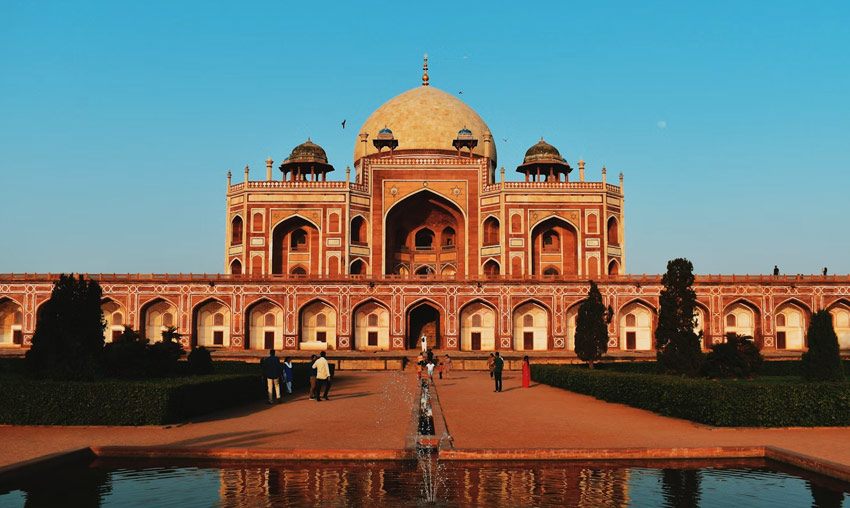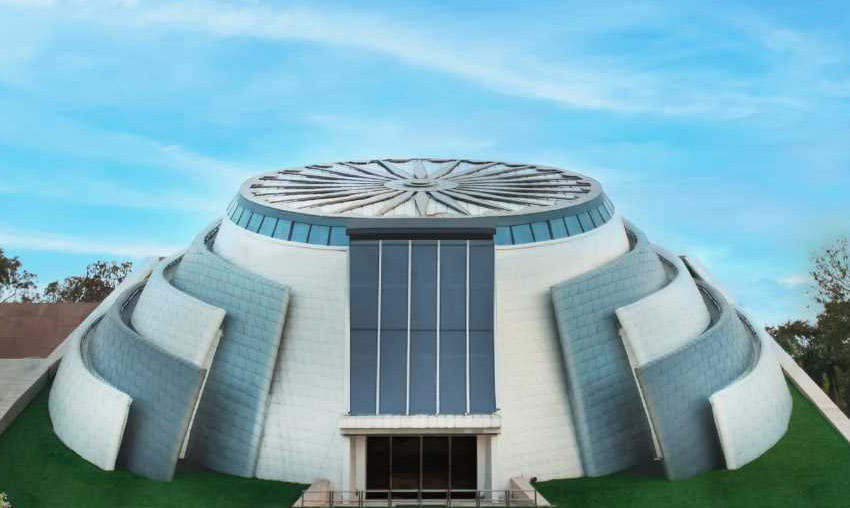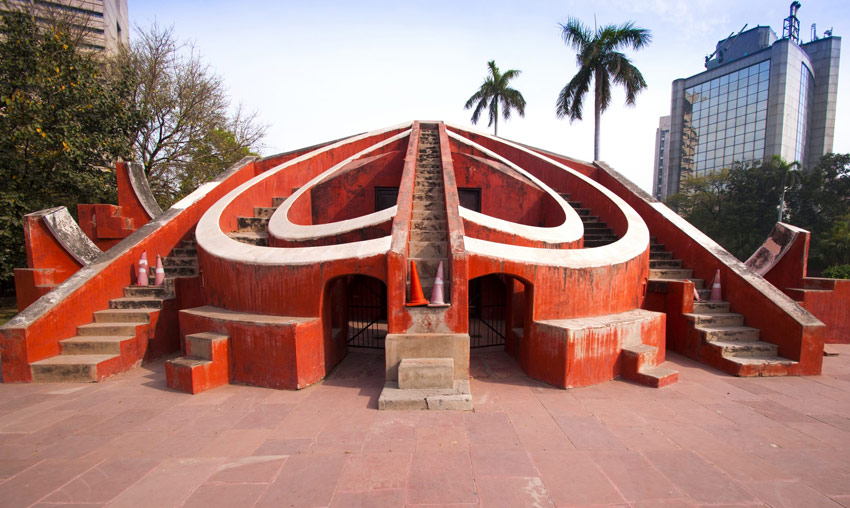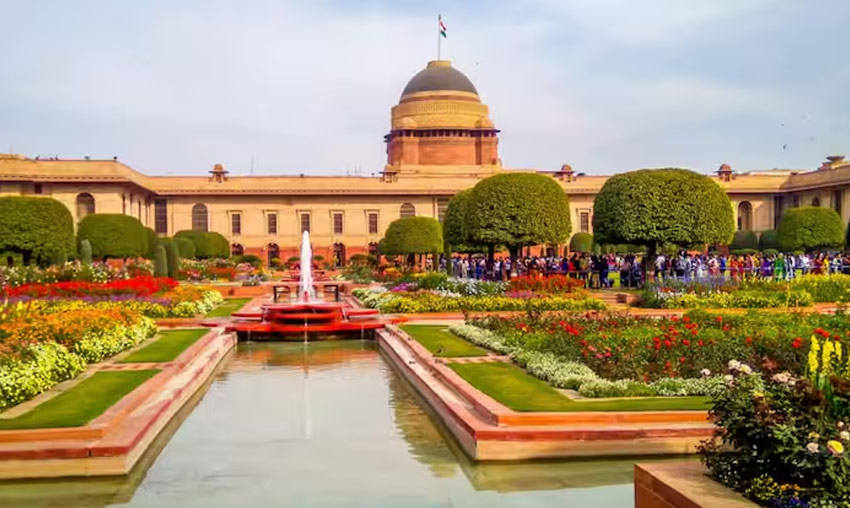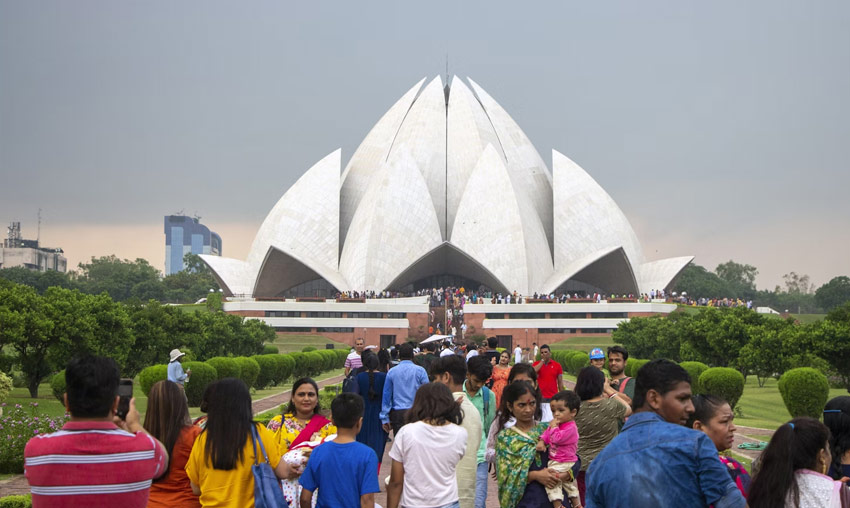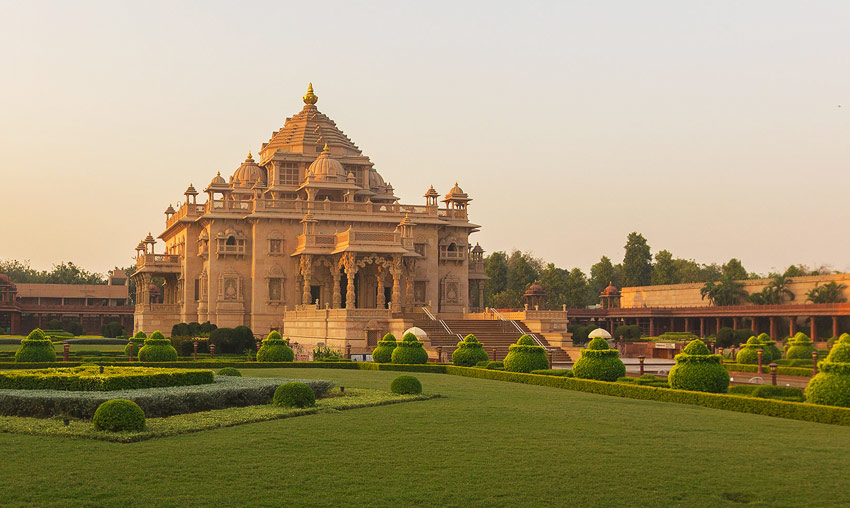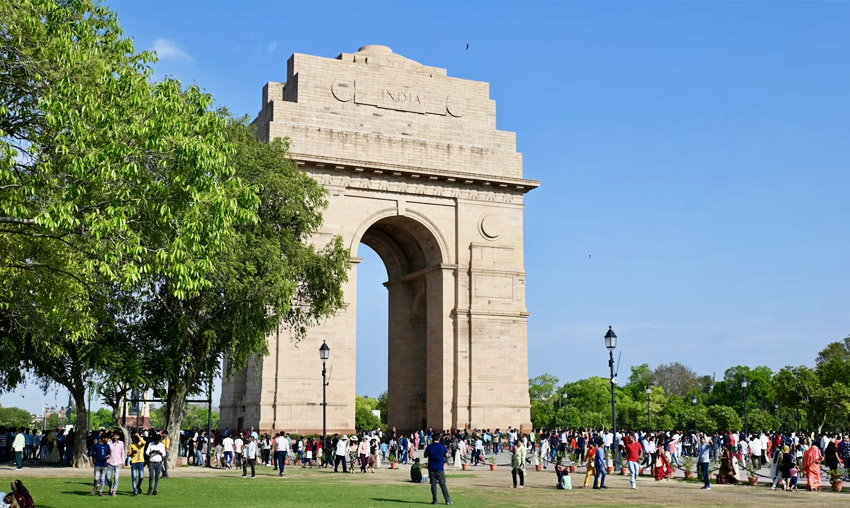Humayun’s Tomb, Delhi | Architecture, History and Timings
Humayun’s mausoleum serves as the Mughal Emperor Humayun’s ultimate resting place, as the name implies. Situated in Delhi’s Nizamuddin East neighbourhood, it is the region’s first garden-tomb. This magnificent work of architecture is one of the few that at the time used red sandstone on such a large scale. It was commissioned for building by Humayun’s primary consort, Empress Bega Begum, in the years 1569–1570. The mausoleum of Humayun is a prime example of Mughal architecture infused with Persian elements, masterminded by the renowned Persian architect Mirak Mirza Ghiyath. Because of its exquisite architecture and rich history, Humayun’s Tomb was included to the UNESCO World Heritage List in 1993.
It’s difficult to overlook Humayun’s tomb’s architectural brilliance. Only in the winter does this majestic monument, which is situated in the centre of an enormous, elaborate Mughal garden, look even more stunning. The remains of countless other Mughals, including his wives, son, and descendants of the later Emperor Shah Jahan, are housed in this tomb, which is located on the banks of the Yamuna River.
Architecture of Humayun’s Tomb
The architecture of Humayun’s tomb is a blend of Persian and Islamic styles, with subtle elements of Indian grace. Though they have been utilised as a patterned galactic emblem, the six-sided stars that adorn the main entryway on the west can also be observed on the main tomb construction. The adored barber of the Emperor is buried in the mosque as well. White marble covers the granite and red sandstone detritus that forms the tomb. It has the essential elements of Indian-Islamic architecture, such as door frames, chhajja, and jaalis. Situated on an elevated terrace over an area of 12,000 square meters, it is eight meters high. This tomb has more than a hundred gravestones, and the whole base construction is raised to a level a few steps above the ground.
Char Bagh Garden
The Char-Bagh, as it is called, is a Persian-style garden with a geometric layout that is separated into four square walks. Thirty-six squares are obtained by further subdividing the four squares into smaller routes. The main water system feeds the little fountains underneath without being visible above ground. The garden is surrounded by walls made of rubble on three sides, while the fourth aperture is where the Yamuna River once flowed, but sadly it no longer does. The well kept gardens will undoubtedly take you back to the era of kings thanks to their allure.
Monuments at Humayun’s Tomb
1. Isa Khan’s tomb and mosque at Humayun’s Tomb:
This is the mausoleum complex of the Afghan aristocrat Isa Khan Niyazi, who was a member of Sher Shah Suri’s court. He had genuinely fought against the Mughals and was their enemy. The octagonal tomb was constructed under Islam Shah Suri’s (Sher Shah’s son) rule. An octagonal garden encircles it, and it subsequently became the family burial site of Isa Khan.
2. Bu Halima’s tomb and garden at Humayun’s Tomb:
This site is situated in the direction of Humayun’s tomb’s western entrance. There is not much information available about Bu Halima, and the tomb is thought to have been added later.
3. Afsarwala tomb and mosque at Humayun’s Tomb:
Towards the southwest of Humayun’s Tomb stands the tomb of Afsarwala, a nobleman in Akbar’s court. There is a mosque next to the grave that is also thought to be dedicated to Afsarwala. These buildings are from the years 1566–1567 CE.
4. Arab Sarai at Humayun’s Tomb:
Craftsmen working on construction projects were intended to live in this secure haven.
5. Nila Gumbad at Humayun’s Tomb:
The “Blue Dome” or Nila Gumbad, which is adorned with blue tiles, is located directly outside the complex’s perimeter. Its construction is distinct, with an internal square shape and an external octagonal shape. For his servant Miyan Fahim, Abdul Rahim Khan-I-Khana, a courtier in Akbar’s court, constructed it.
6. Chillah Nizamuddin Aulia at Humayun’s Tomb:
Situated directly outside the compound, this was intended to be the dwelling of Nizamuddin Auliya, the patron saint of Delhi.
7. Humayun’s Barber’s Tomb at Humayun’s Tomb:
This building is situated in the Char Bagh’s southeast corner. Although the owner of this tomb is unknown, the locals think Humayun’s favourite barber is finally resting there.
Timings : 10:00 AM – 06:00 PM
Time Required : 2 – 3 hours
Entry Fee : Indians – INR 10, Foreigners – INR 250. Video filming – INR 25, Photography – Free
Nearest Metro Station : Jawaharlal Nehru Metro Station on Violet Line
